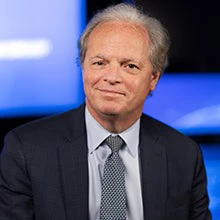 Soldier in military uniform stands on the ruins of the destroyed house. Photo Credit: Shutterstock.
Soldier in military uniform stands on the ruins of the destroyed house. Photo Credit: Shutterstock.
There can be no lasting peace – and therefore no collective security – without sustainable progress towards prosperity. This simple idea inspired the Marshall Plan, one of the most far-reaching initiatives of the last century and remains relevant, especially given today’s world of international tensions and geopolitical risks where decisions on the balance between short term security needs and longer-term development need to be made every day.
While there is an increasing recognition of the nexus between humanitarian, development, diplomacy, and security in responding to crises, we need to not lose focus on the longer-term investments that are essential for economic development and conflict prevention and resolution. There is not a simple trade-off between these categories, which is why the falling levels of official development aid in Sub-Saharan Africa should be so concerning to all.
And so, as leaders gather for the Munich Security Conference to discuss how to support peace against a backdrop of rising conflict and instability – from the Sahel to Ukraine to the Middle East – we need to ensure that development assistance can best contribute to the international security agenda. It can do this through better coordination, action, perspective, and innovation.
There are positive lessons from the past – from the Balkans to Cambodia, Colombia, or Côte d’Ivoire – but also cases of collective failures such as Afghanistan, Myanmar, or Sudan. What is important is that we learn from these experiences to respond today to people whose lives and futures are upended by conflict and crisis. By 2030, nearly half of the world's extremely poor will live in countries affected by fragility, conflict and violence. These countries also account for about 80 percent of acute food insecurity and most of the 100 million people that have been forcibly displaced.
Given the complexity of challenges and urgency of the agenda, better coordination among all of the agencies involved in a crisis situation is needed. Development assistance – alongside diplomatic, military, and humanitarian aid – is one instrument through which the international community can respond to most situations of instability or conflict. Each organization has a role to play, bringing their own perspectives, instruments, and resources. But these interventions are not independent. To succeed, they need to be properly articulated so that actions in one area can complement and reinforce actions in the others.
Development actors can contribute through what they do. At the country level, it is about supporting economic growth and reducing inequalities that can destabilize fragile societies, improving governance and the functioning of institutions that are the foundation for stability, and enhancing service delivery to restore a sense of dignity and hope in the future. At the global level, it is also about helping absorb shocks, such as the increase of food prices triggered by Russia’s invasion of Ukraine, or the long-term threats associated with climate change.
But development actors also bring a perspective that can help sustain and amplify the efforts of others, such as by helping fragile governments exercise efficient policymaking and in the process reassert their authority, and by focusing on medium-term sustainability. They often steer a dialogue on the best use of scarce funding to mobilize, leverage, and use available resources to the maximum effects.
We also need to innovate, including through financial support. What matters is not only the amount of available funding, but also the manner it is provided: its timeframe and predictability, its concessionality, and its ability to crowd in other resources. For example, at the World Bank, through the International Development Association (IDA) – our fund for the poorest countries – we have developed financing tools that mobilize the private sector by de-risking investments so they can create jobs in fragile contexts . We incentivize cross-border cooperation and regional integration, which we know are key to reducing conflicts. We provide financing that is predictable over several years, so that public investment can be sustained, for example to educate refugee children and prevent their marginalization. And we are increasingly putting in place contingent financing to strengthen countries’ resilience to shocks, including climate shocks.
The proliferation of international crises over the last period is a powerful reminder that peace and security cannot be taken for granted. We need to move with urgency, and transform the way international actors work together, to better complement one another in our efforts to strengthen collective security and build prosperity.


Join the Conversation